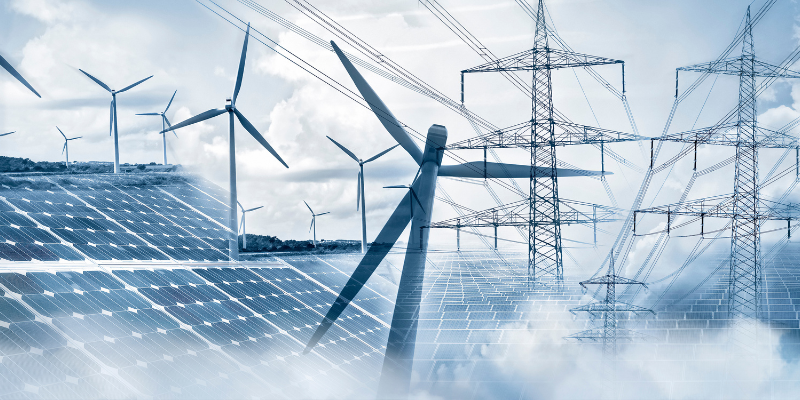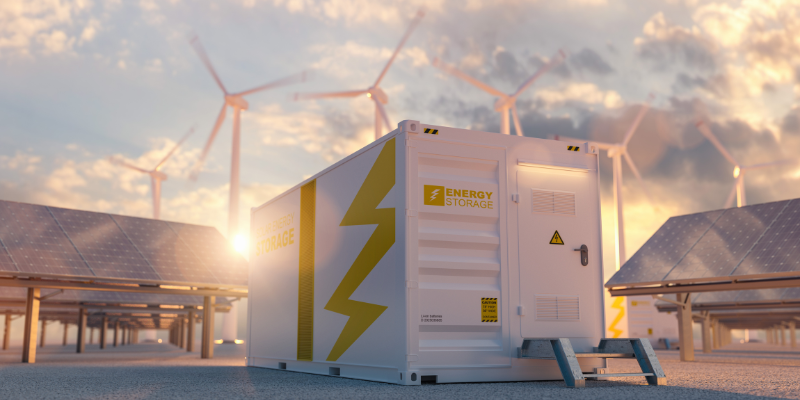Introduction: The Renewable Energy Revolution
The global energy landscape is undergoing a seismic shift, driven by the urgent need to combat climate change and achieve energy independence. Solar and wind energy, the twin pillars of renewable power, are at the forefront of this transformation. By 2025, technological advancements, policy support, and innovative storage solutions are set to redefine how we generate, store, and distribute clean energy. This article explores the groundbreaking trends shaping the future of solar and wind energy, offering insights into their potential to revolutionize sustainability, affordability, and global energy security.
Technological Innovations Driving Efficiency

Solar Energy: Beyond Traditional Panels
Solar technology is evolving rapidly, with breakthroughs enhancing efficiency and expanding applications:
- Perovskite Solar Cells: These next-generation cells promise efficiencies exceeding 30%, far surpassing traditional silicon panels. Their low-cost production and flexibility enable integration into windows, vehicles, and even clothing.
- Bifacial Panels: By capturing sunlight on both sides, bifacial panels boost energy output by 10–20%, ideal for large-scale farms and urban installations.
- Transparent Solar Technology: Transforming windows and skyscrapers into power generators, transparent panels use organic photovoltaic materials to harvest energy without blocking light—revolutionizing building-integrated photovoltaics (BIPV).
- Solar Fabrics: Lightweight, flexible solar textiles are paving the way for wearable tech and portable energy solutions, such as solar-powered tents and awnings.
Wind Energy: Bigger, Smarter, and More Adaptive
Wind energy is scaling new heights through engineering and digitalization:
- Larger Turbines: Modern turbines, with rotor diameters exceeding 200 meters, harness stronger winds at higher altitudes, boosting output by 50% compared to older models.
- AI-Driven Optimization: Machine learning algorithms predict maintenance needs, optimize blade angles, and enhance grid integration, reducing downtime and operational costs.
- Floating Wind Farms: Deployed in deep waters, these farms tap into consistent offshore winds, with projects like Europe’s Hywind Scotland leading the charge.
Energy Storage: Solving Intermittency

Storage technologies are critical to ensuring a stable energy supply:
- Solid-State Batteries: Offering higher energy density and safety, these batteries outperform lithium-ion models, enabling longer storage durations for solar and wind farms.
- Flow Batteries: Ideal for grid-scale storage, flow batteries use liquid electrolytes to store energy for weeks, addressing seasonal demand fluctuations.
- Hydrogen Storage: Excess renewable energy can produce green hydrogen via electrolysis, providing a clean fuel for industries like steel making and heavy transport.
- AI-Powered Management: Smart systems predict demand patterns and optimize storage deployment, ensuring seamless energy availability during peak hours or low-generation periods.
Hybrid Systems and Grid Integration
Combining solar, wind, and storage creates resilient energy ecosystems:
- Solar-Wind Hybrid Plants: These systems balance generation—solar peaks during the day, wind at night—reducing reliance on fossil fuel backups.
- Microgrids and Decentralization: Community solar projects and rooftop installations empower localities to generate their own power, enhancing energy security in remote areas.
- Smart Grids: IoT-enabled grids dynamically adjust to supply and demand, integrating renewables seamlessly while minimizing transmission losses.
Offshore Expansion: Tapping Untapped Potential
- Offshore Wind Boom: The global offshore wind market is projected to grow at a 34.4% CAGR, reaching $6.6 billion by 2025. Europe and China lead with massive projects like Dogger Bank and Jiangsu.
- Floating Solar Farms: Deploying panels on reservoirs and lakes conserves land, reduces evaporation, and leverages underutilized water bodies. Countries like India and Japan are pioneering this approach.
Policy, Economics, and Global Adoption

Government Incentives and Targets
- U.S. Inflation Reduction Act (IRA): Tax credits have spurred $100+ billion in renewable investments, creating 115+ manufacturing facilities and 100,000 jobs since 2022.
- India’s 500 GW Goal: Aiming for 500 GW of non-fossil capacity by 2030, India is scaling solar parks, wind corridors, and green hydrogen hubs.
- Global Net-Zero Commitments: Over 130 nations have pledged net-zero emissions by 2050, accelerating renewable adoption through subsidies and carbon pricing.
Cost Reductions and Market Growth
- Solar panel costs have dropped 80% since 2010, with utility-scale projects now cheaper than coal.
- Wind energy’s levelized cost (LCOE) fell 70% in the past decade, driven by larger turbines and economies of scale.
Challenges and Mitigation Strategies
- Intermittency: Hybrid systems and advanced storage mitigate variability, ensuring round-the-clock supply.
- Environmental Concerns: Proper site selection and wildlife-friendly turbine designs minimize ecological disruption.
- Public Resistance: Community engagement and transparent planning are key to gaining local support for projects.
The Road Ahead: A Sustainable Energy Future

By 2025, solar and wind are poised to dominate global energy markets, supported by:
- Smart Cities: AI-driven grids, BIPV, and EV charging stations will create self-sustaining urban ecosystems.
- Green Hydrogen: Scaling production could decarbonize hard-to-abate sectors, from shipping to agriculture.
- Global Collaboration: International partnerships, like the Paris Agreement, will drive R&D and infrastructure investments.
Conclusion: Powering a Brighter Tomorrow
The future of solar and wind energy is not just promising—it’s transformative. With cutting-edge technologies, robust policies, and collaborative efforts, these renewables are set to deliver 90% of global electricity growth by 2030. As costs plummet and innovation accelerates, the vision of a carbon-neutral world is within reach. Embracing solar and wind today isn’t just an environmental imperative; it’s an economic and social opportunity to build a resilient, equitable energy future.


